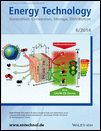Parametric Simulation of Low-Temperature Heat Recovery using a Rankine Cycle to Drive Multi-effect Distillation
Abstract
The Rankine cycle (RC) has been widely applied to the conversion of low-grade heat. In this study, low-temperature heat recovery based upon a Rankine system was proposed to drive multi-effect distillation (MED) in a refinery. The thermal model was described, including the important parameters. The results indicated that a higher mass of steam could be produced by using a higher temperature of the low-temperature heat source. The lower pinch-point temperature difference could inevitably lead to higher evaporator costs. The inlet temperature of the working fluid and ambient temperature both influenced the thermodynamic efficiency of the system. The thermodynamic efficiency of the system increased markedly with increasing inlet temperature of the working fluid. As the ambient temperature increased, the thermodynamic efficiency of system was improved. The thermodynamic efficiency with ammonia/water as the working fluid was higher than that with water.




